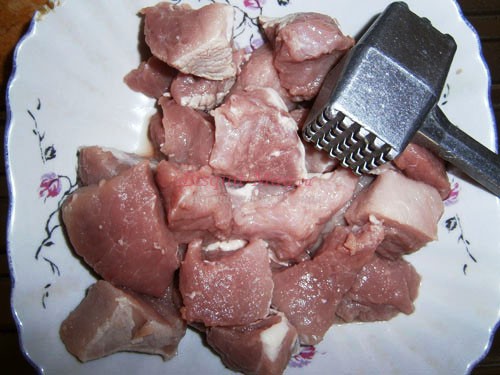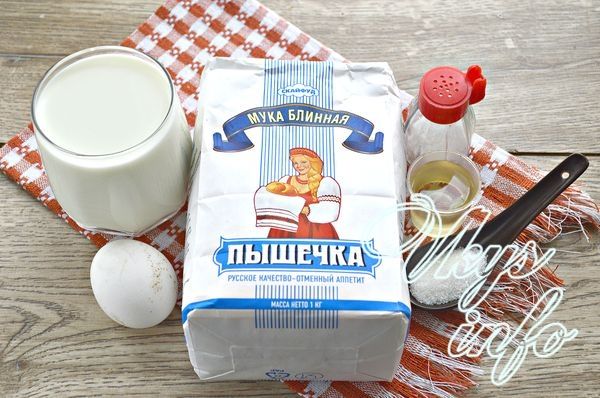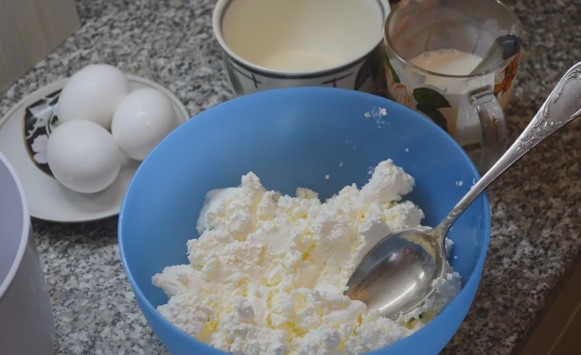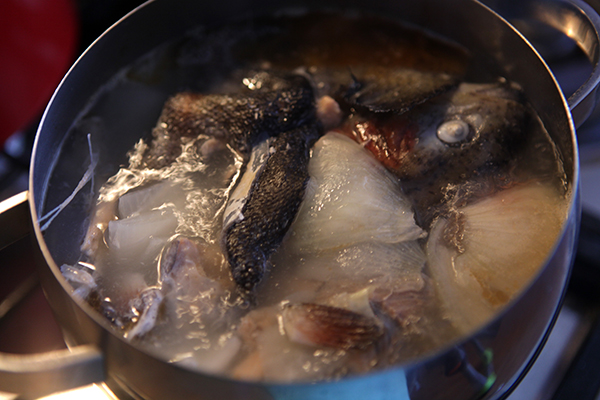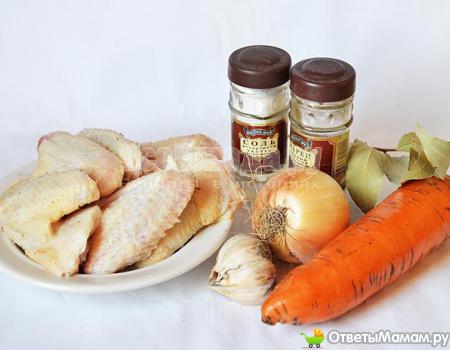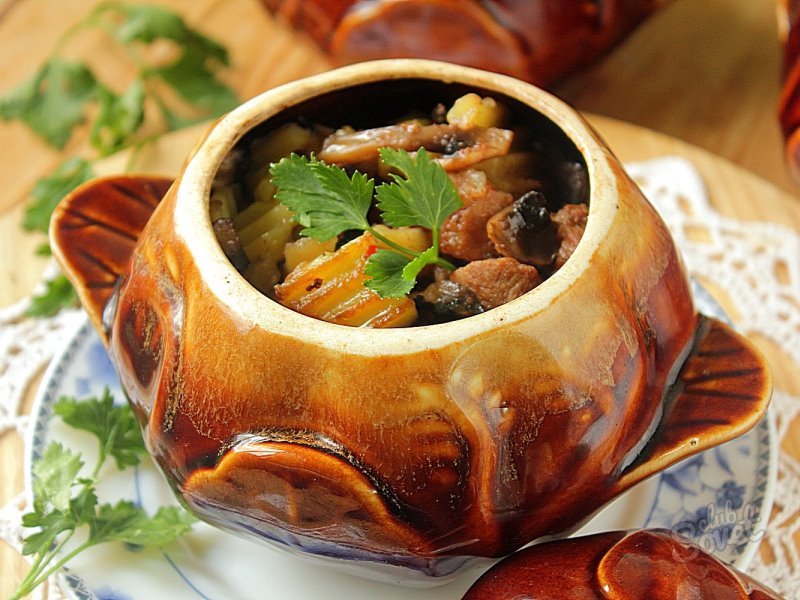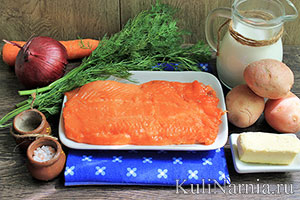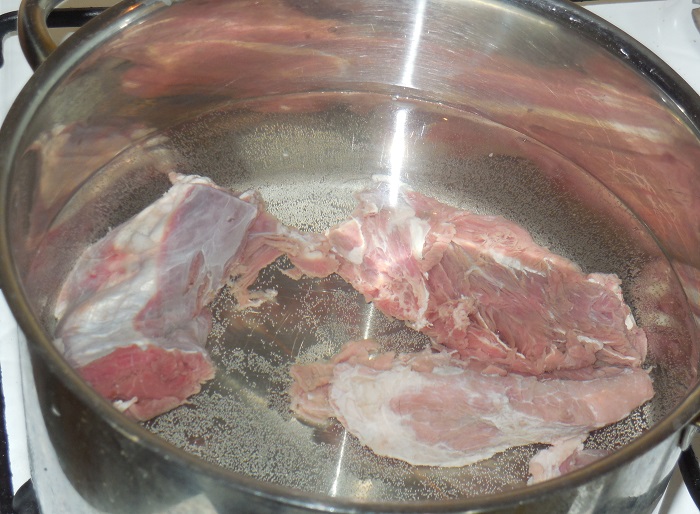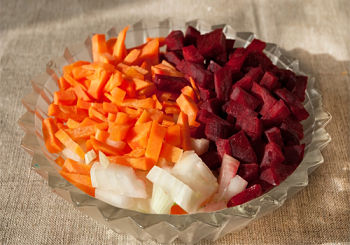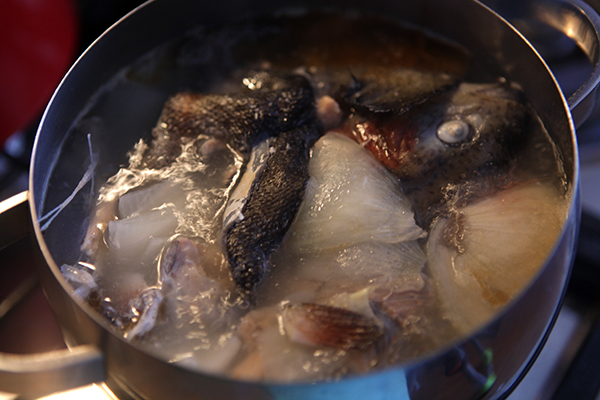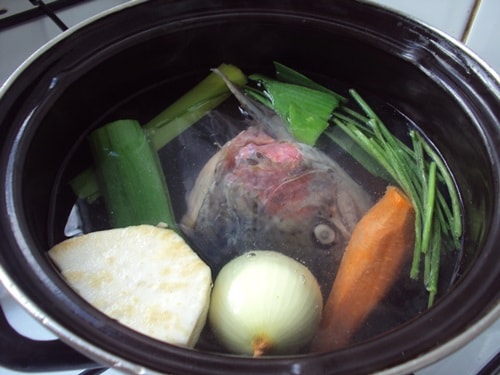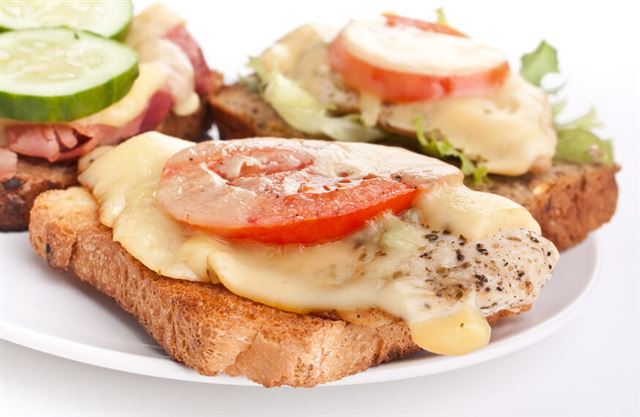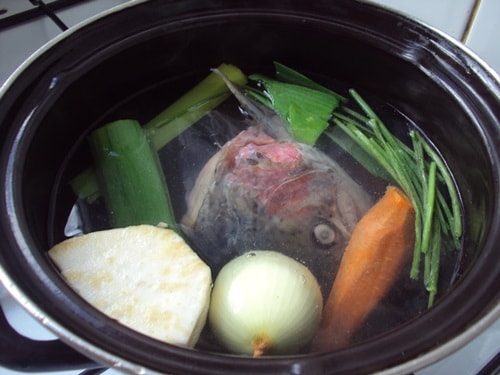Indian herbs and spices. Indian Food Recipes & Indian Spices
Publication 2017-11-03 Liked 11 Views 7462
There is no need to talk about the popularity of Indian spices today, for so long and firmly they have settled in our kitchens. “Food without seasoning is not food at all,” say the Indians themselves, and no one is going to argue with them. , stalls and specialized departments in supermarkets, online stores ... Every day the supply of spices imported from India is growing, but it is not possible to satisfy the demand. And this is understandable: Indian spices not only bring zest to ordinary food, but also act as natural healers.

In ancient times, spices played the same economic role as oil and gas.
Spices - a favorite of Indian cuisine
The birthplace of most of the plants from which spices are made is considered the Deccan Plateau and the southern slopes of the Himalayas. The purely Indian origin of Ceylon cinnamon, basil, cardamom, black cumin, Indian bay leaf, black pepper, curry leaves, turmeric, ginger and long pepper.

Every year, the world consumes more than 10 thousand tons of pepper of all kinds
Spice cultivation in India today is the same as in antiquity. Plants are sown in areas, sometimes in places difficult to access for technology. They grow like a small ecosystem, almost on their own, just like wild nature. Harvested, which will then turn into excellent Indian spices, the old-fashioned way - by hand. Harvesting women dress in

Cardamom plantations look the same as in the last millennium
Spices are always present in Indian dishes. And in sweets, and in salted, and in spicy. Traditional recipes without spices simply do not exist! Thanks to them, the food becomes incredibly tasty, aromatic and, of course, beautiful. And also very useful.

Spices are high-calorie, but in one portion they are only 17-25 kcal
Spices in Indian Traditional Medicine Concept
According to Ayurveda (Indian philosophy of healing), everything that surrounds us, the entire manifested Universe is divided into three gunas - Sattva (Goodness), Rajas (Passion) and Tamas (Ignorance). Including what we eat. The products of plant origin that we consume daily, according to Indian healers, are also divided into three types.
- Tamasic. These include parts of plants that have grown underground and touched the ground - root crops, stems, leaves. Food from them is suitable for workers engaged in heavy physical labor.
- Rajasic. These are leaves, branches, stems. Dishes from them are best consumed by people of moderate activity.
- Sattvic. This species includes only seeds. Such food is useful for leading a contemplative, measured way of life. Everyone who wants to strengthen Sattva, choose special Indian spices - ginger, turmeric, saffron, cardamom, cinnamon, coriander and fennel.

Some spices in Ayurveda began to be applied earlier than they were in the dishes.
The 8 most popular Indian spices
Do you want to diversify your food, emphasize the dignity of the ingredients and add new notes to familiar dishes? Only for you, we have collected the must have of a demanding gourmet. These 8 spices from India are not only a sign of the kitchen guru. Indian Ayurvedic specialists have been using them in medicine for the past several thousand years. So, you can not only have a delicious dinner and surprise guests. But also take care of your health.

Spices were first mentioned about five thousand years ago.
Turmeric. Among the spices, drugs of turmeric are recognized leaders. This spice is considered a natural antibiotic. It treats arthritis and gastrointestinal dysfunction - stomach pain, heartburn, and indigestion. Indian Ayurvedic specialists use it for skin inflammations and for healing wounds. But first of all, turmeric is a popular Indian spice that gives the dish a wonderful golden color and an exquisite sophisticated taste.
A mixture of oil and this spice is used in

According to Ayurveda, turmeric gives prosperity, gives divine energy and cleanses the chakras.
Ginger. Ground ginger root has a wide range of applications. First of all, its taste is appreciated. The spice is added with might and main to soups and meat dishes, dough products and drinks. Ginger received another recognition from healers. After all, he, in fact, is a cure for many diseases. Spice stabilizes the work of the stomach and intestines, lowers cholesterol, positively affects the work of the kidneys and thyroid gland. Ginger root is used both fresh and dried.

It is believed that the use of ginger relieves a person of negative character traits.
Coriander. Coriander grains in Indian cuisine are used almost everywhere. They are appreciated for the mixed (lemon and pepper) taste. Used by Indian chefs when cooking soups, beans, fish and meat dishes, salads, curries. Spice is famous for the properties that balance the body and mind. Coriander is an excellent choleretic agent, it increases appetite and alleviates the suffering of allergy sufferers.

In China, they are sure that coriander has magical love properties
Caraway. The bitter seeds of caraway seeds "know how" to enhance the taste of food, because of which it is added in small quantities. Cumin is the second most popular spice in the world. On the first - black pepper. Ayurveda experts are sure that caraway can rid the body of digestive toxins. Diseases of the gastrointestinal tract and liver recede with the competent inclusion of this spice in the diet.

Herodotus found caraway seeds, exploring mummies in ancient Egyptian pyramids
Clove. A small dried bud in the company with another Indian spice - black pepper - gives aroma and island flavor to dishes of any kind of meat. Cloves are also good for sweets and drinks. This Indian spice is a natural antiseptic, it saves from nausea during motion sickness, stimulates appetite and is effective for colds. The spice perfectly intercepts odors and has a sharp taste, so it is necessary to use it only in small doses.

Roman legionnaires chewed cloves to freshen their breath
Red and black pepper. These two spices are present in every kitchen, and not only in India. So, black pepper is the most popular Indian spice in the world spices market. It is able to establish digestion and help with colds. Topical use of black pepper can stop the bleeding of small wounds. Red pepper copes with circulatory disorders and strengthens the skeleton. It “spurs” the digestive system, while eliminating toxins. Due to the content of beta-cryptoxanthin that neutralizes the effects of tobacco, the spice is strongly advised to smokers.

Red pepper stays ground for longer

Cardamom. Due to its delicate and mild taste, cardamom is indispensable in many recipes of Indian cuisine. It is added to both main courses and sweets, and to. Several centuries ago, healers believed that the king of spices, as cardamom is also called, is effective in treating almost all diseases. Modern scientists claim that this Indian spice reduces the risk of developing melanoma, stimulates the work of the heart and digestive system.

Cardamom does not lose flavor for several months even in open containers
Cinnamon. Probably the most popular sweet spice on the planet. Cinnamon is made from the bark of an evergreen tree. Baking, pastries and drinks become, thanks to her, much more aromatic and tastier. Many use cinnamon as a sugar substitute. This Indian spice has antiseptic and detoxifying properties. Used in the treatment of type 2 diabetes. Also, cinnamon is successfully used to restore blood circulation, with flu and colds. By the way, the best cinnamon in the world is grown on the island.

In ancient times, cinnamon was considered a gift worthy of kings.
Indian Spice Curry Recipe
For a long time, the inhabitants of the Malabar coast (the modern state of Goa) ate mainly rice. Fortunately for them, rice fields were surrounded by thickets of tropical fragrant plants. Resourceful ancient Indians mixed turmeric with cardamom and ginger, added black pepper and coconut. And now the order of annoying rice, thanks to spices, is much tastier and more pleasant. So the world famous Curry seasoning appeared.

"Curry" is an unusual taste, bright color, delicious aroma and the benefits of drug collection
There are a lot of modern curry recipes. There are only four basic spices in the Indian recipe - turmeric, cayenne red pepper, coriander, fenugreek or curry leaves. The list of additional ingredients is much longer - 16 spices. It includes such well-known as basil, mint, cardamom, as well as a little known to European mistresses, Kalang root and Cambodian garcinia.

Indian chefs prepare seasoning for best taste
To prepare the Curry powder, a lot of time is not needed. Unless, of course, you have all the Indian spices. Seasoning according to this recipe is soft, tender. If you want to make it sharper - increase the dose of red ground pepper. So, ingredients:
- coriander seeds - 3 tbsp. l
- cumin seeds - 2 tsp
- fenugreek seeds - 1 tsp
- fennel seeds - 1 tsp
- yellow mustard seeds - 1 tsp
- white pepper peas - 2 tsp
- cloves - 6 buds
- turmeric - 2 tbsp. l
- ground red pepper - 2 tsp

Curry is not suitable for any European cuisine
Cooking: Put all the spices except turmeric and ground red pepper in a pan. Then fry them over medium heat for 10 minutes. The mixture should darken. Cool. Then you need to grind everything in the mill to a powder state. Add red pepper and turmeric. Grind again and sift through spices through a sieve.

In ordinary stores, instead of "Curry" you can buy a mixture of incomprehensible composition and origin
Indian Vegetable Stew Recipe
For this delicious Indian dish, you will need vegetables and real Indian spices. Cooking ingredients:
- potatoes - 2 pieces
- carrots - 2 pieces
- cauliflower - 1 small head of cabbage
- sweet red pepper - 1 piece
- onion - 2 pieces
- garlic - 3 cloves
- ginger root - 3 cm
- cashews - 50 gr
- tomato paste - 2 tablespoons
- cream with a fat content of 20% - 200 ml
- ghee - 2 tablespoons
- bay leaf - a couple
- turmeric - 1 teaspoon
- coriander - 0.5 teaspoon
- a pinch of salt

Indian vegetable stew is an excellent dish for the festive table and for every day
Cooking Indian vegetable stew:
Rinse cabbage to disassemble for inflorescences. Wash and cut potatoes and carrots into slices. Onions - in half rings, and sweet pepper - in cubes. Chop garlic and ginger finely.
Pour vegetables with hot water. Boil for 7-8 minutes. Heat oil in a pan, in which fry about 3 minutes bay leaf with onions and cashews. Then add spices there - garlic, turmeric, ginger, salt. Fry everything for about a minute.
Pour the resulting mixture with tomato paste and simmer for a couple of minutes, stirring occasionally. Put the bell peppers in the pan. Fry for two minutes. Only then add vegetables to the sauce and mix well. Simmer until cooked.

Vegetarian recipes are striking in a variety of options
Of course, the list of popular Indian spices is far from complete. I wanted to talk about curry leaves and basil, about asafoetida and anise ... If you are interested in the topic of spices from India, you will be happy and in every detail to talk about each of them in any “special” store - what dishes to add, which helps, with which it is incompatible . Experiment! And enjoy your meal!
It is very popular in almost all countries of the world. This is not surprising, since Indian dishes have a special, unlike anything else taste. One of the distinguishing features of Indian cuisine is seasoning, which can beautify the taste of almost any dish.
Indian spices have been appreciated at all times. At one time in Europe, they cost crazy money, and many kings supplied whole expeditions to India in order to bring these wonderful seasonings to the west. At one time, for Europeans, their taste was so new and unexpected that huge money was given for them.
Masala
Masala is one of the most popular Indian spice mixtures, it does not have a clear recipe, so it can be used in various dishes and have a different composition. Traditionally used both in India and in Southeast Asia.
Masala is used in Indian salads, appetizers, along with rice, fish, as well as fruits, tea and pastries. The seasoning of masala for cooking and varies. The market value in Goa is 50 rupees per 100 g.
Turmeric
This spice has a bright yellow color. Turmeric belongs to ginger and grows in almost all areas of India. The plant that became the source of this spice is called turmeric long, and the spice itself is made from its roots.
Turmeric is most often used in dishes of Kashmiri cuisine; it is able to endow any dish not only with a special taste and aroma, but also affect its color. One of the main components of the well-known curry seasoning is turmeric.
It is used in dishes: curry, pilaf biryani, chapati, pakora, vegan tandoori, alu gobi, khichari from masha seedlings, etc.
Mustard seeds
Well, who does not know about such a mustard that is already beloved and dear to many of us. Not everyone knows, but she also has an Indian origin. The collection of seeds occurs from a herbaceous plant and initially they do not have any taste at all. Only after roasting, mustard seeds acquire their unique taste and aroma.
Mustard is used not only in Indian cuisine. Many European dishes, including Slavic cuisine, also actively use this wonderful seasoning. She goes especially well to meat. Mustard is also part of mayonnaise.
It is used in dishes: fish and potato curry, pea soup, Bengali eggs, Indian pickles, vegetable cutlets, dhansak with shrimps, Achar gosht, curd rice, etc.

Spices and spices on the market in India
Coriander seeds
Coriander is one of the most commonly used seasonings in Indian cuisine. In the manufacture of this spice, coriander seeds can both be burned and not burned, it all depends on the preparation method.
Most often, coriander is used in legumes, with various soups and sambar, and often coriander is used in conjunction with curry.
It is used in dishes: chicken and beef curry, pumpkin in batter, mint chutney, pilaf biryani, Alu Methi, Dimer Dalna, etc.
Cinnamon sticks
Cinnamon is one of the most popular sweet condiments in the whole world. In fact, cinnamon is the dried bark of trees of the species Cinnamomum Verum.
Cinnamon is very popular not only in Indian cuisine, but also in many European dishes. It is especially actively used in the confectionery industry. All kinds of pastries, cakes and much more using cinnamon becomes much tastier and more aromatic. Also, with cinnamon, they often drink tea and some other drinks. In India, almost every cafe can bring you tea, where in a cup there will be a whole stick of cinnamon: very unusual and tasty.
It is used in dishes: chicken feed, cherry chutney, lentils with spinach, dhansak, Indian cutlets, chicken masala, tea masala, etc.

Star anise
This is the dried fruit of an evergreen plant from India called anise. The plant grows not only in India, but also throughout Southeast Asia. The spice itself has a yellow-brown color, and also has a very strong aroma.
In most cases, star anise is used in the confectionery industry, it is used for baking pies, making cakes and pies, and it is also great for puddings, cookies, jams and many other confectionery products.

Tamarind
Tamarind paste is made from the fruits of trees of a certain type. Initially, such trees grew only in Africa and Madagascar, however, for several thousand years they have been actively cultivated in India, where very conditions exist for them.
Tamarind is a seasoning that is widely known in many tropical countries. It is actively used in a variety of dishes, has a sour taste, and is often used in conjunction with rice.
It is used in dishes: fish curry, spicy soups and rice dishes.
Saffron
Don’t fall, but saffron is the most expensive spice in the world. It is made from the dried flowers of the Saffron plant. The cost of one kilogram of saffron reaches about 2 thousand dollars. Such a high price of this spice is explained by the fact that the process of growing it is extremely time-consuming. A spice is obtained from the stigmas of saffron flower, one flower gives only three stigmas, so to produce 1 kilogram of such a spice, you need to process about 200 flowers.

Saffron gives the dishes a golden yellow color. It is used in the preparation of soups, pilaf and many other Indian dishes. One of the features of this spice is that in large quantities it is deadly poisonous to humans, so saffron must be used in small quantities.
It is used in dishes: jalebi, Indian khir, saffron pilaf, milkshakes, Sabji (vegetable curry), etc.
Black and green cardamom
One of the distinguishing features of cardamom is its sharp, smoky taste, due to which it has found very wide application in Indian cuisine. Cardamom is made from the dried fruit of the same tree. Queen of Spices - that's what people called him because of his incredible aroma and taste. Cardamom grows best in western India, where it is cultivated the most.
Cardamom is actively used both independently in various Indian dishes, as well as in other spices. For example, cooking curries is simply not possible without the use of cardamom. Cardamom oil, which is part of many Indian drinks, is also actively used. Cardamom oil is also commonly used in perfumes due to its exquisite aroma.
It is used in dishes: fruit apple salads, feed, dhansak, Indian biriani, fret, tea and coffee, etc.
Nutmeg flower and nut
It is made from the fruits of trees belonging to the Muscat family.
It is actively used in baking and in the confectionery industry. Muscat is also used for seasoning Indian meat dishes.
It is used in dishes: lassi, cherry chutney, masala tea, halava, etc.

Not a single dish is complete without natural and selected seasonings. It is for the exotic taste that many prefer Indian cuisine. Hindus highly value their health, therefore they prefer only natural ingredients that give national food an extraordinary taste and unforgettable aroma.
No one can remain indifferent to such. Although it is not always pleasant to eat so seasoned food because of its spicy composition, it is extremely useful.
Types of the most sought after spices
Hindus use as spices everything that grows in their area of \u200b\u200bresidence, whether it be dried fruits or herbs. Indian spices have in their arsenal such types of spices as turmeric, cardamom, curry, cinnamon, vanilla, cumin, coriander, tamarind.
Although most of the above are available to our latitudes, only Indians know the exact application of seasonings. The most popular of these is curry.
What do we know about curry?
Indian spices, and among them curry, are widely used in the preparation of various dishes. This seasoning is a yellow mixture of the leaves of the tree of the same name, which grows in hot latitudes. Curry is added to make sauces and marinades, and this seasoning is also used for a famous dish - chicken curry with mushrooms.

But along with the taste, curry also has healing properties. Improves brain activity, and also fights cancer cells in the body. It tidies up the level of cholesterol in the blood and improves its composition. It has a pronounced fat-burning property, removes excess fluid and toxins from the body.
A little about cardamom
The spice is characterized as spicy with a bitter taste and a pronounced aroma. The plant itself grows in warm latitudes both in India, and in Sri Lanka, and in China. Most often used for baking and added to different drinks.

Indian spices, such as cardamom, have a positive effect on the body's immune system. These green fruits increase immunity and prevent harmful bacteria from entering the body. Effectively treats sore throat and cough. It is also a powerful antidepressant. Easily copes with diseases of the gastrointestinal tract.
What is turmeric?
A common seasoning in some areas of India, located in the north and south of the country. Belongs to the ginger family and has a characteristic bright yellow color. These Indian spices are extracted from the plant of the same name, which is called that. Hindus love turmeric because it gives the dish a beautiful color and a sweetish taste, and at the same time a unique aroma.
But, as mentioned earlier, every plant that Indians use in cooking their food has a huge impact on the human body. So turmeric is a natural antibiotic that relieves inflammation and improves skin renewal. Effectively fights cancer cells, preventing the spread of metastases. This is a miracle cure for many ailments and an indispensable component of national dishes.
Other spices
Other spices that have a spicy taste and an unforgettable aroma include cinnamon. This spice is known all over the world. It is used for desserts, added to coffee and tea. Cinnamon also effectively fights viral diseases.

Vanilla is a spice that is obtained from the pods of a tropical orchid. This seasoning is added to flavor the baked goods. It is one of the most popular and expensive spices in the world. It has a calming effect on the body.

Tamarind is a true Indian spice with a bright sour taste. Used for many Indian dishes, both for main and for desserts. Good effect on the digestive system, and also improves the functioning of the musculoskeletal system. It has a large amount of potassium, which improves heart function.
Spice against Indian spices
Indian spices are famous all over the world; no other seasonings have ever been used so widely. In different countries you can buy well-known oriental seasonings. And what about spices? These are all kinds of herbs and fragrant leaves, fruits.
In India, both ready-made spices are used, which season the dish during cooking, and various spices that are pre-dried or added raw. Indians do not lose anything, and all plants are used for cooking.
Where can I buy Indian spices: addresses in Moscow
Due to the fact that the demand for exotic seasonings is constantly growing, in Russia they can be purchased in different cities. Where can I buy Indian spices in Moscow? Retail Store Addresses:
- Moscow, Pankratyevsky Lane, 2, 1st floor. District CAO
- Moscow, Sretenka street, 36/2, metro station "Sukharevskaya".
- Moscow, Leningradskoye Shosse, building 21.
At these addresses you can find where Indian spices are sold. Moscow is a big city where goods from abroad can be purchased in each district. And you can make a purchase in a simpler way - order in the online store. It’s more convenient to take advantage of online shopping, as you don’t have to spend too much time looking for an Indian store.
It is safe to say that Indian spices are the best and most delicious in the world. And most importantly - they have healing properties. This can be seen only by looking at what the Indians look like even in old age. And all this is due to the fact that they regularly use traditional medicine in the form of
Fragrant, invigorating, burning, sweet ...Indian spices that make seemingly ordinary dishes unforgettable.
The main secrets of using spices were revealed to me by a chef from India, an expert on spices and the founder of a restaurant-club in Berlin, Srikant Singh.
Indian chef, expert in spices, leading culinary workshops. Culinary experience - 18 years.
Srikant began cooking at the age of 15, he studied cooking with his mother. Originally from Bihar, the Singh family was constantly moving because of his father's work and spent more time in Calcutta, Hyderabad and Bangalore. Thanks to this, the hostess managed to study local cuisines, which are very different from region to region, and pass on this unique knowledge to her son.
Since then, Srikant painstakingly collects and documents the secrets of cooking traditional dishes and using spices. Many of this knowledge is endangered.
Srikant spent the last 10 years in South Africa, New Zealand and Germany, where he became interested in fusion cuisine: he studied national cuisines and created his own dishes, combining local products with traditional Indian spices.
Since 2009, she has been conducting culinary master classes, during which she usually uses at least 25 spices.
In 2015, Schrikant opened his own Supper Club restaurant-club in Berlin.
In 2016, together with his wife Anastasia Sharova, he founded the Happy Bellyfish culinary project, the main purpose of which is to make knowledge about food, the food production process and traditional culinary skills accessible and applicable in modern life.
 Shrikant conducts a master class
Shrikant conducts a master class - Shrikant, what is your philosophy of food and its preparation?
- Taste and health are inseparable: good food should make you and your bellies happy. It is important to know and appreciate the culinary traditions and regional products, wherever you live, and, as far as possible, to use seasonal and fresh products.

- What is the main task of spices?
- Make the taste of the dish brighter, more interesting and contribute to the assimilation of food. Spices "live" exclusively in combination with other ingredients. At the same time, they should in no case drown out their natural taste. Therefore, one of the main rules is not to use spices with a strong and pronounced taste along with delicate products that have a delicate, delicate aroma. Otherwise, nothing will remain of the dish from them.

- What set of spices is enough for any housewife to feel confident in the kitchen?
- In the Indian house you will always find 4 main spices: turmeric, ground red chili pepper, ground coriander seeds and zira (cumin). I will tell you a secret that combining only these spices in different ways, you can prepare the basis for a huge number of dishes of Indian and other cuisines of the world. In addition to their palatability, each of these spices has unique beneficial properties for our health and digestive system.
- Indian cuisine is famous for its spiciness, but many can not do such dishes. What spicy spices do you recommend and why?
- In fact, there are a great many of them. You can, without fear, use coriander seeds, which also serve as an excellent alternative to fresh cilantro leaves: just add a few ground seeds at the very end of the cooking process. If you like the aroma of caraway seeds, then an excellent mild seasoning for vegetables and bread is zira or kalingi (nigella).

For a complex and sweet taste, you can resort to allspice, allspice, or, for pleasant bitterness, to fenugreek fenugreek. Try to add a thin nutty flavor without pungency with black mustard seeds. Just do not confuse them with yellow! Asafoetida, which, however, must be used with caution, will serve as an ideal complement to lentil and legume dishes and help their absorption. Do not forget about turmeric - it will give the dishes a pleasant smoky aftertaste and a golden hue. But in no case do not put it too much!
 Srikant on vacation
Srikant on vacation - Is it possible to do without salt due to seasonings and other products?
- Yes, but to prevent the dish from losing taste, it is better to use ingredients with an intense and bright sour taste. For example, lemon or tamarind, mango powder. Another option is to turn to nuts, such as peanuts. Natural taste enhancers such as ginger and garlic are a good substitute for salt. And, of course, I recommend using fresh herbs: parsley, dill and coriander.

- In desserts also use spices. The most famous are vanilla, cinnamon, hot pepper and salt. What else can be added to the sweet treat to make it unusual?
- A classic set of spices for sweet dishes, which is very common in Europe, also includes cloves, star anise and nutmeg. To give oriental notes to desserts, we often use cardamom and saffron, as well as white poppy seeds. And if you want to achieve lightness and delicate aroma, try adding floral essence, for example, roses.

- We are very fond of ginger and usually brew it with lemon and cinnamon. Can you advise something new and original?
- From ginger, you can make a delicious dressing for lentil dishes. To do this, cut fresh ginger with stretched straws and lightly fry with zira or black mustard seeds.
 Photo: from the Happy Bellyfish page
Photo: from the Happy Bellyfish page - And what spices are good in salad dressings?
- It all depends on the ingredients and your taste preferences. Calcined seeds of zira, tamarind juice, many “fruit” spices, such as mango powder, go well with vegetable salads. The simplest and most universal recipe: thoroughly calcinate the seeds of zira, grind them in a mortar and add to the salad along with salt and lemon juice.

- When do you need to grind spices, and when not?
- In Indian cuisine, there is a general, basic rule: for gravy, curry and sauces, it is better to use ground spices. If you want to give a delicate aroma or taste to the product, and sometimes, on the contrary, neutralize any taste or aroma, then you should not grind spices. But there are many exceptions to this rule. Grind spices or not, depends on the particular dish and the desired result.

- What is better to grind spices?
- Mortar should always be a priority. But if you are harvesting large volumes of spices, then you can not do without a coffee grinder.
- What gives roasting spices and how to do it right?
- Spices are ignited to reveal their taste and aroma. Most likely, you will have to fry the spices in two cases: either during the creation of your personal mixture, or during cooking.

The first is about the calcination of whole spices without oil, over medium heat and with constant stirring. All spices should be fried separately, because they need a different amount of time until they are ready. As soon as the aroma of the spice begins to unfold, immediately remove it from the heat.
If you use ground spices in the cooking process, add them exclusively to the base, which can be tomatoes or onions. Never put spices directly in hot oil, or when it begins to smoke.
 Diwali - festival of lights in India
Diwali - festival of lights in India - What delicious and win-win spice blend could you recommend?
- There is one successful basic recipe that can be combined with a large number of ingredients:
Fry 1 teaspoon of coriander seeds with 1/2 teaspoon of zira and grind. Add 1/4 teaspoon of turmeric and 1/4 teaspoon of paprika and grind again.
This mix of spices is very suitable for red beans. For vegetables, it can be made more interesting by adding warming spices: 1.5 cm. Cinnamon, 2 pcs. cloves, 2 pcs. green cardamom, 2 peas of black pepper, and at the very end - ½ teaspoon of nutmeg. This blend is great for starchy vegetables such as potatoes and cauliflower.

- Are there any unsuccessful mixes of spices?
- That's a very difficult question. It all depends on what exactly you are cooking. And there will be exceptions to each rule. For example, cardamom and zira. In most cases, I will never combine these spices with each other. But if I cook chickpeas, I always use cardamom and zira together, however, at different stages of cooking.
In other words, some spices do not mix well if used only with each other. But at the same time they can be added to a blend with a lot of other spices. In this case, their proportions will be very important.
 Wedding of Shrikant Singh and Anastasia Sharov
Wedding of Shrikant Singh and Anastasia Sharov General rule: it is bad to combine spices with a delicate aroma, for example, cardamom or saffron, with those that have a dominant taste - especially for acidic spices such as tamarind or mango powder.
- How to choose the right spices? Is there any way to check their quality?
- In order to really understand the quality of spices, you need to feel them: smell, touch ... Unfortunately, in most cases this is impossible: in modern stores spices are rarely sold by weight, and not everyone has access to markets.

If we talk about basic principles, the most important thing is to determine that the spices are fresh: they should not be too dry (this is very noticeable on the clove, for example) or lose color. Always check the date of manufacture and uniformity of size and color of spices in the package. If you rarely use spices, then do not buy grinded mixtures: they will not retain their properties and taste for six months.
- Tell us about the proper storage of spices?
- It is important to keep them away from direct sunlight and humidity and not to forget about expiration dates.
- Which spice is considered the most useful?
- Turmeric. It’s hard to find the same healthy spice.
 Turmeric and Ginger
Turmeric and Ginger - Can spices be used to treat diseases?
- Yes, but in no case do self-therapy. It is necessary to consult a doctor who will conduct the necessary studies and take into account a huge number of factors, including the characteristics of each person, the stage of the disease and the specifics of its course. It is very important to understand not only what to use, but also how.

- Are there any spices for weight loss?
- Unfortunately, there is no such “magic” spice. Much depends on your body and its individual response to various ingredients. For example, most warming spices improve digestion, but some people after spicy foods feel tired and inert. In addition, dishes with a strong intense taste, often lead to overeating. Therefore, the most important thing is a proper, balanced diet and a moving lifestyle.
 Shrikant on a journey
Shrikant on a journey - I'll tell you how to cook curry with chickpeas. This recipe, firstly, is an excellent base for almost any curry, and secondly, it is an example of using different types of spices at different stages of cooking.
Chickpea Curry Recipe
Photo: from the Happy Bellyfish page
Ingredients:
- 100 g chickpeas soaked for a minimum of 8 hours
- 1 medium onion
- 1 medium tomato
- 1 teaspoon mashed garlic and ginger (in equal proportions)
- 1 teaspoon coriander seeds
- 1/2 teaspoon ground zira
- 1/2 teaspoon turmeric
- 1/4 teaspoon red pepper
- 1/2 teaspoon garam masala
- cinnamon stick (2.5 cm)
- 3 bay leaves (preferably Indian)
- 3-4 pcs. cardamom
- ghee or oil to choose from
Cooking method:
- Rinse the soaked chickpeas well and cook for at least one hour without a lid in 3 cups of water with 2 bay leaves, cardamom and 1/4 teaspoon of turmeric. If you use a pressure cooker, then the time is reduced to 20 minutes. Chickpeas is ready when it can be easily stretched between two fingers.
- Heat oil in a deep pan and add cinnamon and one bay leaf.
- Cut one half of the onion into thin feathers and add to the pan. Grind the other half of the onion in mashed potatoes and add to the pan. Fry for several minutes until the onion begins to golden.
- Add mashed garlic and ginger, fry for another 2 minutes.
- Put coriander, zira, 1/4 teaspoon of turmeric, 1/4 teaspoon of red pepper, garam masala and fry, stirring, for another 2-3 minutes. It is very important that the spices are not burnt.
- Add finely chopped tomato and cook until the tomato softens to a smoothie consistency.
- Add chickpeas with a small amount of water in which it was cooked and simmer for 10 minutes over low heat. Season with salt at the very end.
Enjoy your meal!
(Visited 3,454 times, 1 visits today)
Under " indian spices"implies a number of aromatic plants that are grown in various climatic conditions of the Hindustan Peninsula. Moreover, many of them were brought to India from countries with a similar climate, and have been successfully cultivated for many centuries. Spices and India are these words in the perception of a person with long time ago practically - synonyms.
List of 12 Indian Spices
which are traditionally considered Indian
- Cardamom

The description and properties of cardamom are described in detail on the Cardamom page
-

Description and properties of cinnamon are described in detail on the page.
- Badyan, aka star anise

Description and properties of star anise are described in detail on the page.
-

Description and properties of turmeric are described in detail on the page.
-

Description and properties of vanilla are described in detail on the page.
-

Description and properties of black pepper are described in detail on the page.
- Cumin, he is Zira

Description and properties of cumin are described in detail on the page
- Fenugreek, aka Fenugreek, Helba

Description and properties of fenugreek are described in detail on the page
- Nigella, she is Kalingini, nigella

Description and properties of Kalingi are described in detail on the page.
-

Description and properties of ginger are described in detail on the page.
-

Description and properties of sesame seeds are described in detail on the page.
-

Description and properties of Indian salt are described in detail on the page.
It is also worth mentioning that traditionally considering any spice as purely Indian is a little incorrect, it is more a stereotype. Since most spices grow not only in India, but also in other countries. And these countries can also be called the birthplace of this spice - for example: ginger grows in Indonesia, real Ceylon cinnamon - the name already shows that it is the native of Ceylon. Consider this point.
Although Indian food is not fresh, most Indian dishes are exquisitely spicy.
Most traditionally, spices are heated in a pan in which the fat or oil is pre-melted. The lightest spices are added in the last turn, while spices with the most pronounced aroma are laid immediately, even before preparing the main dish.
Given the hot climate of India - spices also play a very important role in natural conservative food.

In addition, in India, spices have long been successfully used for medical purposes. About 3000 BC spices were described in treatises on Ayurveda (see Wikipedia) described the use of various spices and herbs for the treatment and prevention of certain diseases.
In our store you can always buy Indian spices in a large assortment, choose to your taste! Delivery in Kiev and Ukraine.
Overwhelming most indian spices are good for health: they facilitate the process of digestion and assimilation of food. Indian cooks know this and skillfully use this knowledge, balancing not only the taste of food, but also their useful properties. So, ginger, for example, helps well with an upset stomach, pepper is an antihistamine, garlic lowers cholesterol and blood pressure, turmeric is useful for ulcers and in heat.
In many Indian restaurants, dishes are decorated with sweet dill, mint, cloves or cardamom because these plants also perfectly refresh the oral cavity. In addition, they prevent heartburn, nausea, and improve digestion. Therefore, it is not surprising that spices are added to almost all dishes.

On the pages of our store you will find a lot of information about Indian spices. Read also the section Articles about spices - we have collected there quite competent articles, which are rarely found on the Internet and continue to work in this direction.
Watch Around the World Video on Indian Spices
